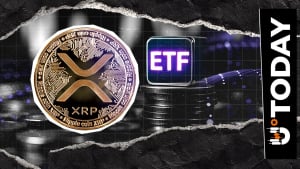
Every crypto community loves to argue about supply, whether it is Bitcoin’s sacred 21 million, Dogecoin’s infinite faucet or Shiba Inu’s meme trillions. But one question that rarely gets asked is why XRP, one of the most established digital assets, was minted with an exact 100,000,000,000 tokens — no more, no less.
That silence was broken this week when David Schwartz, Ripple’s CTO and one of the original architects of XRP Ledger, dropped a straightforward yet revealing answer: the number was chosen to satisfy exactly three pragmatic conditions rather than some mystical formula.
First, according to Schwartz, is that the supply needed to guarantee adequate divisibility so that XRP could handle micropayments at scale, something that was part of the ledger’s DNA from day one, designed long before NFTs or DeFi made "dust" transactions fashionable.
Second, the supply figure had to fit right inside a 64-bit integer, which sounds deeply technical but essentially means XRP could be handled efficiently by standard computing systems without breaking accounting logic.
And third, Schwartz noted, it had to be easy for humans to remember, because adoption is slowed if people cannot wrap their head around the numbers.
XRP is a bridge
The context today makes the choice look prescient: out of the 100 billion minted, just under 60 billion XRP are in circulation, with about 35 billion locked in escrow. At a market price of $2.58, that circulating stack alone is valued at over $155 billion, placing XRP in the global top four.
So, while Bitcoin was born as digital gold, XRP was designed as a high-throughput bridge asset.

 Dan Burgin
Dan Burgin Vladislav Sopov
Vladislav Sopov U.Today Editorial Team
U.Today Editorial Team